
Nick Bullock writes about years of misadventures on Gwynedd's infamous crag Craig Doris, culminating in climbing War and Peace E5 6a, an adventurous 16-pitch traverse on loose and friable rock...
Mick Lovatt and I walked the track leading from the Cilan National Trust car park towards the coastal path running along the top of Craig Doris. The track was rutted and uneven, and once it headed across the edge of the moorland, became boggy. After months of lockdown, staring through the window, staring out of that bloody window, out over the yard with its shade and limited view, the vista opening in front of me now was dazzling.
A skylark with a puffed-punk-crest rose from the grass, hitting the heady heights, singing with all of its heart. A stonechat flew from fencepost to fencepost, its black head separated from its reddy-brown body by a vicar's dog collar. As we neared the crag, the shimmering sea was topped with the occasional lick of white. The smell of salt caught on a westerly. The sense of loss that had built over the months of lockdown increased, but here I was, standing in the open, basking in the cool spring sun, back at Doris.
Mick and I dumped bags and scattered gear at the top of Byzantium Wall, and after setting the abseil rope, descended to the warm rock at the base of the climb. The sun shone directly onto the rock and onto my upturned face. A gull wallowed lazily past, a black and white dot in the blue. Byzantium, a three star Pat Littlejohn E4, was one of my much loved, and often climbed. A close friend to be revered, never taken for granted, and missed in times of separation.
I stepped off the ground. The rock was warm and as orange as the stonechat's chest. Just above the waves, a gannet was rising from the depths, its black tipped wings dripping water, working hard. The crux of Byzantium is near the top, and is crimpy and technical, so it's never over 'til it's over, but once it was over, I built the belay and took in the ropes as Mick began to climb. Sitting, looking out to the sea, I hoped this COVID shot-across-the-bows was a lesson learnt, but I doubted the human race would learn. So, for now, I would just enjoy the view and dream.
I don't remember how many times I've walked beneath the cliffs of Craig Doris; a hundred, five hundred, a thousand? It all started about seventeen years ago, during my second summer in Llanberis. Dougal Tavener and I were hunting for somewhere to avoid the rain. I had climbed most of that summer with Dougal, a talented, self-assured, bright eyed Assistant Instructor at Plas y Brenin. We sat in the gloomy kitchen of Hen y Ysgol, The Old School in Nant Peris, owned by Tim and Lou Neill. I flicked through the pages of the guidebook, Tim sat alongside also.
"War and Peace, a 16-pitch Pat Littlejohn and Steve Sustad E5 6a that traverses the whole of Craig Doris, let's go and do that Dougal?"
Dougal was keen - but of course he was.
"Yep, let's crush it!"
This is how I recall Dougal's reply, but it's incorrect, no doubt; it possibly was something similar for the day though, because Dougal was young and down with the kids. Tim looked on with an old man of the mountains attitude, shaking his head as if dealing with petulant kids.
"You really don't want to do that, the rock is very loose on Doris, that route hasn't had a second ascent, and will probably never get one."
If I'm honest, I'm sure this would have made Dougal and I keener. Ah, what naïve, arrogant idiots we were! Anyway, Tim talked us out of it, but later that summer, I visited Doris for the first time with James McHaffie, where we climbed an E5 6a called Bobok. Bobok is two pitches. I opted for the first, because it was technically easier at a grade of 5c, which again showed my naivety, because technical grades don't bear any significance to how hard the climbing on Doris actually is.
Four hours later, I had climbed the first pitch and looked down as Caff climbed up to join me. When we were together at the belay, I instructed him to get us out of this loose and decomposing world. As we stood on top of the crag coiling ropes, sorting gear, cleaning the muck from hair and clothes, I laughed at the thought of sixteen pitches of the terror-inducing looseness I had just experienced. Annoyingly, Tim had been correct yet again!
After that first visit, I climbed at Doris a few more times. Doris is not a crag you return to quickly, or at least, it wasn't in those days. A raving masochist would possibly say, Doris was like a fine wine, something to be savoured, but for most of us not into masochism, Doris was somewhere beautiful to escape the rain, somewhere to feel alive, somewhere to challenge the solid, somewhere to swallow ego and forget about grades, somewhere to meet yourself and face the truth. But Doris was also somewhere you needed a big break from to forget!
The following summer, I mostly climbed with another young and very talented climber called Dan McManus. Dan was fun to climb with and his youthful exuberance as addictive as monosodium glutamate. At the time, I never imagined meeting someone who had more uncontrollable enthusiasm than I did. In fact, so much so, I was usually the voice of reason, and I must admit, that didn't sit well.
Dan and I visited Doris on several occasions, sometimes Caff joined in. The three of us were quite a scary mix of enthusiasm and ego to be pulling on all of that loose rock. Rust Never Sleeps, Rockin in the Free World, Tonight at Noon, The Gross Clinic, Byzantium, Honey Dew, Noble Savage. At the end of each trip, I would drive back to Llanberis, frazzled and invigorated. I always showered when I returned to Ynes Ettws, the CC hut in the Llanberis Pass, and an exhausted smile would turn to laughter as I watched the muck spiralling down the plughole.
I climbed my first new route on Doris, Blood Meridian, in 2010, alongside the white-trousered, red bandana-wearing Hippy, Graham Desroy. A few more new routes followed in 2011: Walk the Line, Orange Blossom Special to name two; the Johnny Cash years, also with The Hippy, who would play Johnny Cash on the drive over. A few more years passed, and in these years, along with his white trousers turning a shade of grey and his red bandana becoming a bit pink, the Hippy's desire to scare himself faded, but another willing fool — no, I mean psyched old individual — came into the fold.
Mick Lovatt, The Perfect Man, never a hair out of place, never a food stain down his front, never a patch of skin without sun tan. Mick had only gone and retired and bought a place ten minutes from the top of Doris — it was like all my loose and terrifying Christmases had come at once!
At first, Mick was less than smitten:
"I'm not going to do anything too hard, just a few of the classics,"
He reinforced this sentiment after seconding a Haston E7 called Bam Bam:
"Brilliant, crazy, I'll never lead that".
A few days later he sent me a message:
"I've been thinking…"
Hooked!
And, as the saying goes, the rest is loose — and terrifying — history.
Mick and I frequently climb at Doris; too frequently, some may say. During these visits, the traverse would often come up in conversation. One day, Mick suggested we should attempt to do it in a single day. Pat and Steve had climbed War and Peace in 1997 over two and a half consecutive days. I remember looking at Mick to see if he had forgotten to apply his bronzing lotion, because this was the talk of someone with delirium. No way, sprinting has never been my forte and sprinting on Doris would only end one way — and it wasn't going to be the right way! At the time, I don't think Mick grasped the magnitude of the thing.
Craig Doris is a massive crag, with striking horizontal breaks at several levels. War and Peace follows some of these breaks; it weaves deviously from one to the other. But Doris is not the crag on which to go off-piste, and knowing the exact line would be key to success; it's not at all obvious. And should we forget, Pat Littlejohn E5 6as are never 'standard', or a giveaway. Pat's partner on War and Peace was Steve Sustad, the man who climbed Cerro Kishtwar and the North Face of Changabang with Mick Fowler. Steve had climbed loads of other stuff also; no slouch! 'Not a giveaway' — this became my mantra every time I thought of starting pitch one of sixteen.
At the time of their early and very nearly successful attempt, Leigh McGinley and Chris Wentworth were both superb and enthusiastic proponents of adventure climbing, and, as the story goes, they were a good way along the traverse before a belay ledge collapsed, ripping them both from the rock, to leave them both hanging from pieces of gear the leader had placed. But this story isn't correct.
Leigh and Chris had climbed ten pitches without a hiccup, and returned, a week later, for day two, starting on pitch eleven, the overhanging Cripple Creek section. They had climbed the first two pitches, including the technical crux and, I would imagine, thought they were well on their way. Leigh had almost finished pitch thirteen, but as he stepped into the corner of Error of Judgement, a particularly loose E1, he grabbed a large boulder with both hands, which fell into his lap. The last runner was a way back and, clutching the boulder, he plummeted like a human wrecking ball, hitting the rock and breaking ribs. At last, Leigh let go of the boulder and it fell, breaking his big toe.
Fortunately, not as the tale tells, Chris held him, the belay remained intact and they made their escape, never to attempt the line again. Every time Mick and I chatted about War and Peace, Leigh and Chris's attempt came into conversation, as did the cliches; 'Not a giveaway' and, 'It's never over, 'til it's over!'
Three years ago, maybe four, Mick and I set a date for going sideways. Fortunately, the rain scuppered the plan. I say fortunately, because we had not checked the complete line; there were swathes of the 377m (1240ft) traverse and route-finding intricacies lost to us. We would certainly have failed. A year later, we came close to starting again, but unsettled weather and the way the summer appears to fly by, scuppered us once again. I'm quite sure we would have failed on this attempt also, as I don't think either of us were mentally in the right place, but maybe what we really needed was to be in the wrong place!
This year was different, to say the least. Once travel opened after lockdown, I met Mick and he decided to climb a few Doris classics; Blood Meridian, E6 6a, Hung Like a Hamster, E5 6a and Rockin' in the Free World, E5 6a. I climbed a route on the No-Name section I had tried the previous year called Dissonance, E7 6c. Each climb was on a different section of the crag and with each ascent, we looked around and thought about the traverse.
***
Later in the summer, I dropped a rope down the largest, and most mysterious section of Doris, the Little Ug Area. The Little Ug Area is a great swathe of wall, with the least number of climbs. But, by the start of June, Mick and I had both repeated one of the established routes on the left of the wall, Dream Canyon Handshake, E7 6b, and climbed a new, two pitch route called Now We're Sucking Diesel E7 6b, 6a. I had also climbed a new route straight up the middle of the wall that I named Ride my Llama, E7 6a (It's a Neil Young song). So now, this section of the cliff was well known and once again, thoughts turned towards the traverse.
Unlike other years, we took the time to walk beneath the crag, picking out the line and the belays. The week before the start date, we repeated a few more classics in sections of the crag we hadn't climbed for a while, and dropped a rope down some of the vegetated corners, making sure they were not so overgrown as to make constructing belays impossible. The thought of what happened to Leigh and Chris was never far away. At the end of the week, we felt almost prepared. And for the first time since those naïve, ego-fuelled ramblings in the gloom of Tim and Lou's kitchen, I thought we may have a chance.
The morning arrived too soon, I was camped in my van at the farm, almost at the top of the crag. Gulls sailed past, then a family of about ten magpies causing black and white trouble. The sound of the black and white cows chomping the grass accompanied my own breakfast chomping. Ray Wood and Paul Diffley were here with the intention of filming the attempt, although I'm not sure why — two old men, slowly shuffling sideways for two days, didn't strike me as a blockbuster. Camped either side of my van, it felt like I was being guarded so I couldn't make a run for it.
Mick arrived and after sorting gear, we walked the fields. Dew caught on the green, and a northerly blew over the clifftop. The ravens, parents and fledglings, caught the breeze, performing aerobatics and clonking. Their wobbling nest, made of large sticks and orange bailing twine, towered beneath a George Smith route called Chosstokovich E5 6a. The nest was deserted now, left alone to sway in the wind - one of the more solid towers in these parts! We lowered a bag containing water and a few bars to a grassy ledge at the end of pitch four, fixed a rope and lowered to another ledge at the end of pitch ten. The rope would hopefully be used to pull ourselves out at the end of day one.
At the far end of the crag, the boulders beneath the Golden Wall are large and white and smooth. Some have white quartz bands like Saturn's rings. The incoming sea was almost at a point where we would not be able to start, so we abseiled, threw the coiled ropes onto a ledge and climbed to the point where the traverse starts. The boulders wouldn't be rumbled today, the sea was calm.
I tied-on and, without thinking, began brushing, testing and shuffling. Sixteen to go! I didn't know the time, it wasn't important. The plan was to climb ten pitches, stopping just before the steep section crossing Rust Never Sleeps, and return on day two with six pitches, including the technical crux, remaining. I was relieved Mick had mellowed; he was happy now for the attempt to be over two days, or maybe he had at last come to his senses.
By mid-morning, we were going well, and had reached the water stash at the end of pitch four. Pitch three had been the first real test, passing the arête left of the E1, Friendless, to balance on the wobbly spike, before heading across the thin, exfoliating seam through Hung Like a Hamster. These first pitches had been in the shade, but it was sun all the way now, and both Mick and I knew how debilitating the heat on Doris can become. Not the best at hydration, I forced myself to drink a litre of water, before setting off on the most difficult pitch yet: the wall that had once been a mystery, the Ride My Llama wall.
It was a weird one coming in from the side and looking down onto features you know, but features that are difficult to recognise because of this new, sideways approach. This was the first really steep pitch, and I recalled seeing a picture Pat had posted on social media of himself heel hooking, while leaving a large crozzly pocket. I wasn't sure I wanted to heel hook, it all seemed a tad flamboyant for Doris, but the steepness and the lichen covered holds were warming my forearms more than I wanted my forearms to be warmed!
In the back of the pocket, slightly thicker than a broom handle, was a thin, grey tufa. A perfect handhold, but it could easily break. I would have to throw as much leg as possible into the base of the pocket to hang from the tufa to get the desired shake-out. It would be quite precarious and if the tufa snapped, falling would be explosive! My forearms were now officially hot and hanging from the lichen covered edge of the pocket was not giving me the shake-out I desired, so in a flash, I thought: 'Fuck-it!' and threw for the tufa, that — surprise, surprise — didn't break! Grabbing it and pulling on it like I was in Spain, I threw a leg into the pocket and began my recovery. Maybe Pat hadn't been showboating after all!
Mick led pitch six, a wonderful 5b waft across Byzantium Wall. I was a tad envious that Mick got to lead this pitch, but after I climbed pitch seven, the relatively easy and slabby pitch, I wasn't envious of Mick having to climb the next one. Pitch eight finished with a hanging stance on the right edge of the Absent Friends Wall. This section, possibly more than any, was an unknown and the most rubble-strewn. If anything was going to scupper day one, it would be this. The clouds that had helped to keep things manageable made themselves scarce now. Mick complained of dehydration and finger cramp. My fingers and right bicep cramped up, too. The sun belted our bravado.
Paul and Ray had done a superb job filming every pitch. Ray had been running ahead, setting up abseil points and hanging ropes, from which Paul had lowered to catch the (very slow) action. In-between setting up ropes, Ray filmed from the top. But as I belayed, I glanced behind to see Paul, standing beside me, looking a little wobbly and red.
"Are you OK Paul, you look a tad...over-cooked!?"
He nodded and made a few gurgling noises. "I think I've underplayed the strength of the sun; I've not applied enough sunscreen."
I made some encouraging noises and offered platitudes. We were on pitch eight — we only had this pitch and two others before day one was done. The last thing I needed was a collapsing Paul Diffley!
Mick was still moving sideways, although when he climbed cautiously into and very slowly, but quite dramatically, out of a sandy, overhanging groove, I knew he had just completed the wiggiest section so far. The Absent Friends buttress juts out from the cliffs either side; it's a massive flake reminiscent of a climbing wall that can be tilted to a steeper angle. Somehow it remains in place. One day I'm sure it'll go — I just hoped today wasn't that day! Mick entered a confined chimney, that is the gap between the rock still attached to land and the precarious flake.
"Watch me here, this is terrible and the gear is rubbish."
I replied saying I was watching him, but all I could see was the lack of protection for the second! While downclimbing, some blocks fell and bounced, hitting the grass slope below, then continuing to smash onto the rock platform near the boulders at the sea's edge. Mick made it and set up a hanging stance from eight pieces of gear. I came out from my reverie, to look across — and you know what, I would have put money on some of Mick's neatly coiffed bouffant being ruffled!
"Climb when ready."
I wasn't sure I would ever be ready, but stepped sideways anyway. Paul had fashioned some form of recovery and jumared up the rope. This, at least, was one less thing to worry about, although at this point, I wasn't bothered if Paul got out or became something desiccated and crunchy for the ravens to peck.
Crossing the wall until beneath the groove was almost OK. I was beginning to wonder what all the fuss was about. I removed the last piece of gear for a while and felt sure Mick had been playing to the camera. Looking up the overhanging groove, it was steep, and yes, if I fell, and the gear held, I would fly across the wall and hit Mick, but there would be a way to bridge the groove. In a moment of absolute stupidity, I pushed my left toe to a small hold, and rocked up. My fingers scuttled around trying to find a good crimp, but all they found was a clay ripple. 'Bollocks'. Unable to reverse, I had to keep going, and began to do the thing of nightmares. My life had come to this: popping for clay ripples on Craig Doris, oh what joy!
"Well done, one more move and the holds get better."
Mick was nearly always encouraging, but I sensed something a bit 'extra' in his voice; I guessed he was thinking about collapsing belay ledges and exploding gear. I popped again, before scuttling my feet high and then, at last, managed to grab a good hold. The downclimb to where Mick hung was similarly intense, albeit in a less dramatic way. It was loose and sandy and almost unprotected. If anything ripped, it would hit Mick and if I fell, I would also.
"Don't touch that block!" Mick shouted.
I'm not sure if this is a thing from childhood, but anyone telling me there is a loose hold and not to touch it, makes me want to grab it and give it a wobble. It's the same on sport climbs in Europe — when I see a block that someone has written an X on, I just can't help myself.
I wrapped my hand around the large block and gave it a bit of a twist. Whoa. It was heavy and moved easily, so I carefully udged it back into position and avoided it, as though it had sharp teeth. Fortunately, almost everything, including myself, stayed in place and after sorting ourselves, physically and mentally, I set out across the overhanging Absent Friends Wall, on the front of the buttress and around the Doris Day arête.
The long grass on the ledge after climbing the pitch caressed my poor toes. Life in the grass felt good. Mick joined me, then set off across the fairly moderate pitch ten, another slabby one. Paul (who looked more alive, and less like raven fodder) was filming from the big ledge we had hung the rope from at the beginning of the day. I seconded, then hand-over-handed up the rope. And by the time we had packed, and began walking, the birds had gone, and the day appeared to sigh with relief as the cool took hold.
I would like to say day two began with a feeling of imminent success — we had the whole day to climb six pitches — but I couldn't get the image of me lobbing from pitch twelve to be left hanging and spinning in space. I set off on the warm-up pitch that was no warm-up; the roofs and sharp, red crozzly fins and grey clay pocketed walls of Cripple Creek, Rockin' in the Free World, and Rust Never Sleeps.
I'm a big Neil Young fan, I just didn't want the climbs, named after his songs, for breakfast! The speckled rock pipit joined me in my Neil Young, non-warm-up, no doubt hoping I disturbed the occasional spider. I looked at the pipit, feeling envious of its wings. The pipit looked at me, not envious of anything. The overhangs completed, I traversed onto the mesmerising and dangerous headwall of Mick's route, The Mudshark, Haston's route, Melody, and my route, Pushing for Rail.
Looking down at the orange flakes and dusty crimps, I tried to block out the time I broke both hand holds and fell fifty feet, only to be held by a hand-placed peg and a micro cam – and a hippy! With each metre, I looked around trying to remember the moves, the millimetres, the months, the years, but with each step, I grew closer to the hanging belay in the Gross Clinic groove and the pitch that, alongside the rattle of chains wrapped around the necks of cows, had entered my dreams last night.
This was it. Mick set off on pitch twelve, heel hooking, bumping his hand from one flat and sandy hold to the next, swinging his almost-too-perfectly tanned legs. Climb it as if it were a solid cellar board, that was the philosophy, but there was space below, a whole lot of space.
We chatted beforehand about what we would do if Mick fell, and decided the best way was for me to lower him, almost forty metres to the ground, where he could walk to the top, abseil in, and go again. And if he was wasted, I would give it a go. If he led it clean and I fell, we then had a bit of a problem, or more to the point, I did, because it would mean hanging far away from the rock and out of sight of Mick. I'd have to Prusik, and then continue, and I really didn't want to do this; it would leave me with a feeling of not having climbed the route.
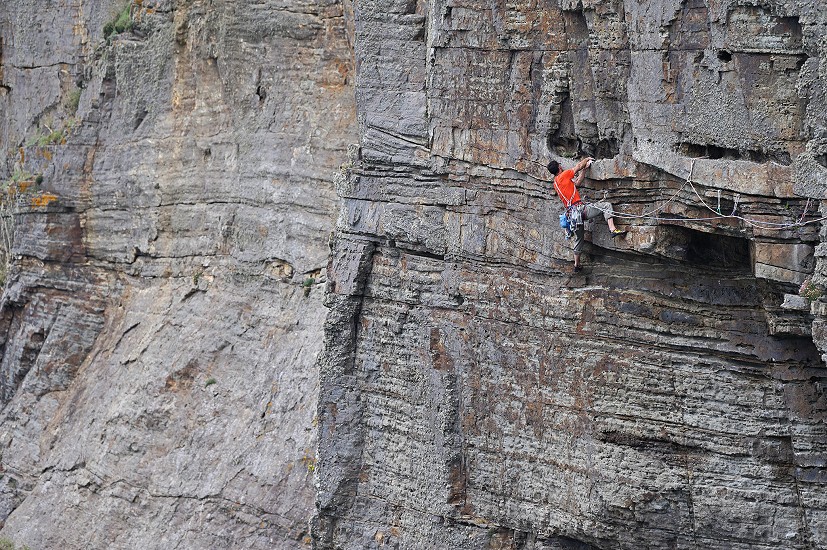
For once, climbing as the second felt more stressful than if I were leading. I leaned out from the groove watching Mick heel-hook and slap - his body hung almost horizontal, and then off he went around the arête, out of sight. As long as nothing broke, he had climbed the technical crux. Now all I had to do was second it.
I was sure the climbing would be obvious and the secret would be to move confidently, to just climb without contemplating the air beneath and the consequences of letting go. I told myself that if any gear was difficult to remove, I should leave it. There was one place to get a shake-out and after an attacking start, I had reached this spot. Bridging across the top of a groove, I looked down into a world of red clay, wafer flakes, dark mud and iron stone spikes. This was the top section of Haston's Requiem for a Vampire, it looked like a wild place that no climber should enter, something from a Hieronymus Bosch painting. I could smell earth and damp and intimidation.
Off again, climbing back up to the rail, then a heel thrown above my head. I was sure I could hang off the heel and shake out, chalk up, look around, but I forced myself on. Gripping a small hold that wasn't small, but felt tiny, I slapped and then slapped again before swinging both legs left. I slapped and campused through the upper section of Bam Bam, and then slapped again, before pulling around the arête. Crossing the wall above Mick's route Destiny, I joined him hanging from the belay in Bobok, the same belay I had hung on years before. I was elated and relieved to have made it without falling.
I set off on pitch thirteen and across the upper wall of what is possibly Leigh's finest new route, Box of Blood, E7 6b, beginning to sense success, but these thoughts had to be contained, because, as Leigh and Chris had discovered, it's never over 'til it's over.
Attached to several pieces of gear, I now hung in the corner that Leigh had pulled the block from. They had been so close. The tottering raven's nest was on a ledge, almost alongside. Mick appeared, the sun lighting his sweaty face. He soon set off on pitch fourteen, the Deadwood Wall. I knew this wall well, having climbed two new routes on it last year, and reminded Mick there was a nasty, exfoliating crack near the end of the pitch.
Also, last year, in a pocket, high on the right of the wall, a nesting fulmar had stopped any continued exploration. The fulmar was silky white and quiet, apart from the occasional low frequency chuckle. Locked away, it sat, almost trance-like, in its red, guano-smeared pocket. The number of seabirds in the world has dropped from 1.5 billion to 500 million (two thirds), in the last sixty years. They are in serious decline, so I had no problem leaving the wall alone.
As predicted, Mick took a while to guess at the correct level, but he did it and as I climbed around yet another arête and across Tell your God to Ready for Blood, one of the new routes from last year, I couldn't stop the excitement rising. Years of dreaming and imagining, and here we were, two pitches away. The belay was on a route called Gardeners' Questing Time. The name was apt, I reckon you could grow potatoes in the corner. Neither Mick, nor I, had climbed it and I was adamant I never would!
Above, near the top of the wall, I knew there was another nesting fulmar. The bird was a year old, some of its feathers were brown, signifying it had fledged last year. I wondered if it was the chick I had watched grow in the same pocket and if it was, I wondered where it had been while we had all been locked down? How many storms had it endured, how many crashing waves had it skimmed, what stories could it tell? Fulmars fly across the sea's surface hundreds and thousands of miles in search of food, using — amongst other things — their sense of smell to find food and to navigate.
Some climbers dislike fulmars because they vomit as a defence mechanism. I loved sitting on the edge of the cliff as fulmars flew past, almost touching my face with the tip of a wing. Fulmars are aerial high achievers, out and about, having what looks like fun in the worst of weather. I love fulmars.
The fifteenth pitch was a joy. I traversed around yet another arête on perfect hand-jams and shuffled a long way, before climbing onto a large ledge, just before a wall we both knew intimately, the Harmony wall. I sat down, pulled shoes from swelling feet and began to take the ropes in. The end felt close now.
Mick shuffled to me and after collecting the gear, continued. Mick and I had spent one spring working our way through every route on the wall and adding a few of our own, so now, watching Mick mooch away from me, before turning my head to look towards the white boulders where we had started yesterday, I allowed myself to imagine what it would feel like to pull over the final lip and came to the conclusion it would feel like relief!
"SAFE." Mick's deep, Lancashire tone echoed out to the waves. I mobilised, stripping the gear and mustering the energy for one more pitch. I intended to savour this final pitch, because this climb had been many years in the waiting; it had popped into and out of my life regularly — and now it was almost over. Yet another thing I had dreamed of, that would no longer be a dream.
As excited as I was to finish, there was a part of me that was sad to have finally done it and to have lost the dream. Dreams are the things that motivate us; they keep us going, they keep us young and excited, they stir the imagination. But once completed, these dreams become memories and the smells, the sounds, the feelings, they fade and become recollections in the greying of time, something to happily stumble across in moments of reflection, but something never to be repeated.
So, I stepped left and attempted to grasp this moment; the sea's breath and the rattle of the shingle, the breeze stirring the croziers of the ferns smothering the hillside opposite, the gasp of the blackthorn on the bank beneath, but it was too much to hold onto, so, reluctantly, I continued moving sideways, accepting it was soon to be a fading memory in a fading life.
- CRAG NOTES: Dream of Dry 11 Jan, 2021
- ARTICLE: The Smell of Change 6 Apr, 2020
- CRAG NOTES: A Grey Seal's Memory 18 Sep, 2019
- ARTICLE: The Pitfalls of the Peroni Supermodel 25 Oct, 2018
- ARTICLE: Nick Bullock's Nightmayer 16 Jun, 2017
- Rock, Shock and Three Smoking Classics 26 Aug, 2014
- Nevermore - 'the New Mort' 14 Apr, 2013
- Echoes by Nick Bullock - Exclusive Excerpt 27 Aug, 2012
- That's Rowdy! BMC Scottish Winter Meet 2012 31 Jan, 2012
- Guest Editorial - Motivations? by Nick Bullock 18 May, 2008



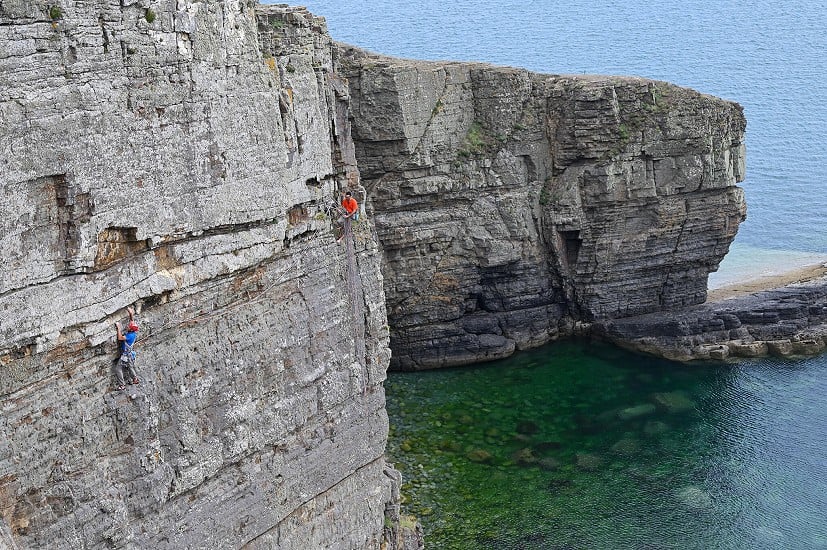
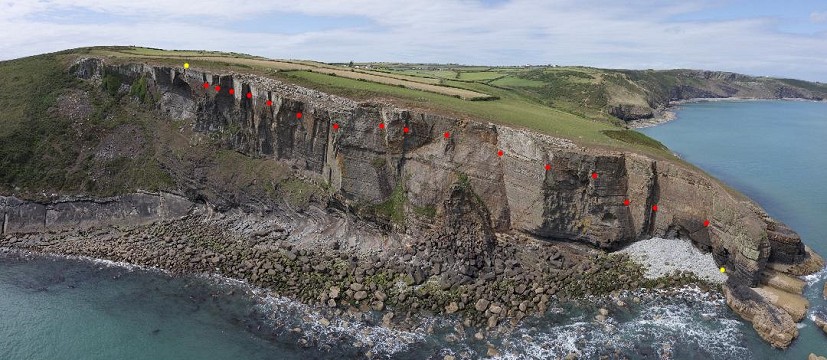
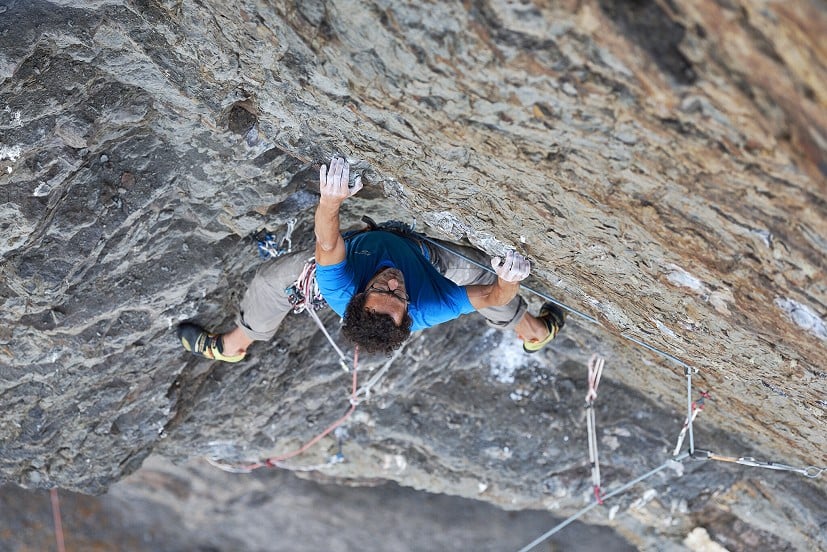
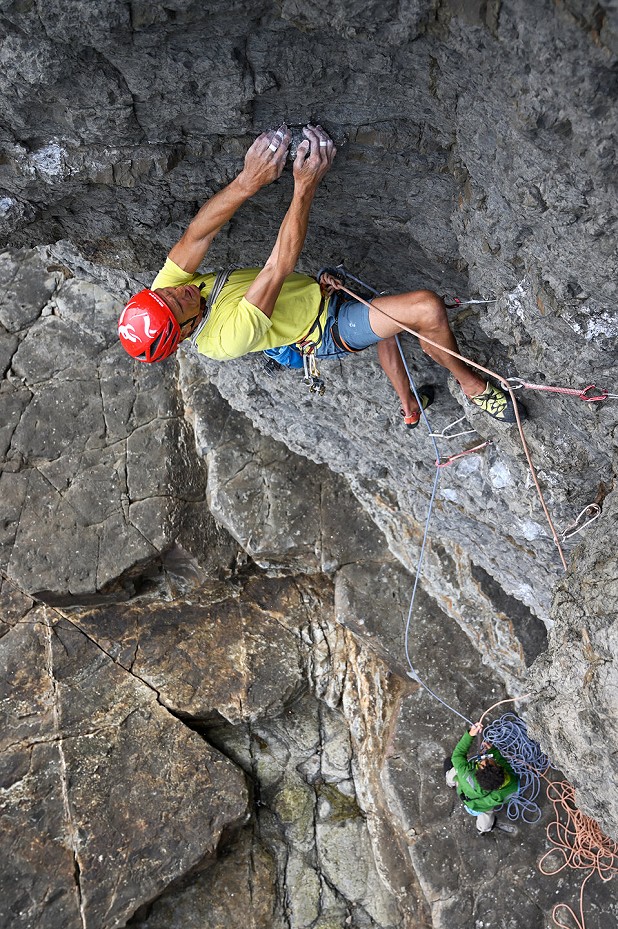
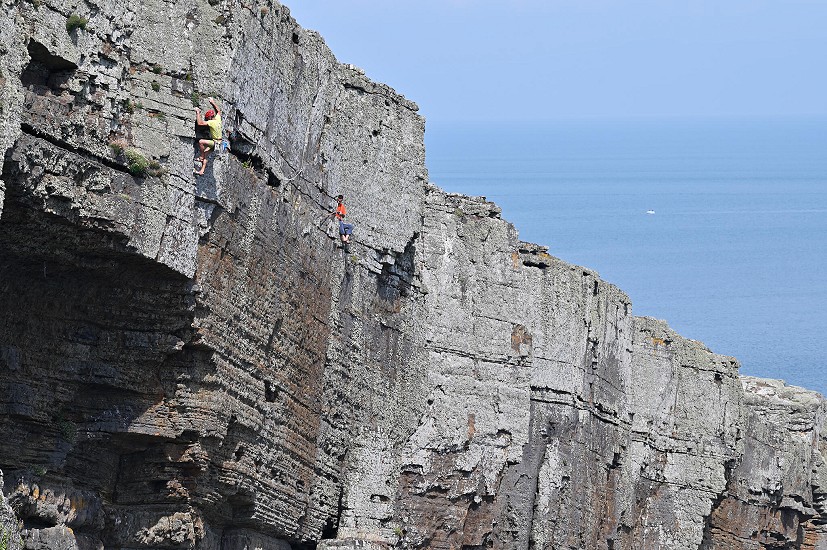



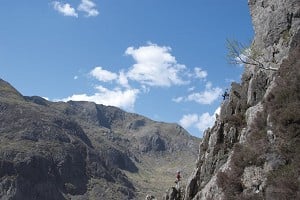









Comments
The horror. Brilliant!
'Dreams are the things that motivate us; they keep us going, they keep us young and excited, they stir the imagination...'
Absolutely. As you rightly say, once accomplished, those dreams become cherished memories. And so, on to the next dream. And the one after.
It's not over until it's finally over.
Mick
I go with “ loose your dreams and you’ll loose your mind”!
Did you mean "lose" or "loose"? Nevermind, it sort of works either way!
Ruby Tuesday?
What a thoroughly excellent write-up of what sounds like a thoroughly 'character-building' climb!